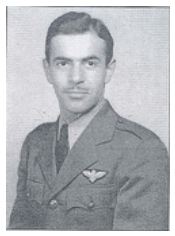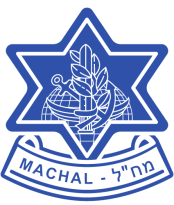A DEDICATED AVIATOR
 Even before Charles Lindbergh brought aviation to the front pages, Philip Marmelstein was an airplane enthusiast. He grew up in sight of the Navy airbase at Mustin Field in Philadelphia and was deeply into building model planes as a kid. He shared his hobby and neighborhood with future 101 Squadron pilot and close friend, Coleman Goldstein, who lived a few doors away from him.
Even before Charles Lindbergh brought aviation to the front pages, Philip Marmelstein was an airplane enthusiast. He grew up in sight of the Navy airbase at Mustin Field in Philadelphia and was deeply into building model planes as a kid. He shared his hobby and neighborhood with future 101 Squadron pilot and close friend, Coleman Goldstein, who lived a few doors away from him.
Before World War II, Phil’s interest in aircraft blossomed when he earned a private pilot license, and he joined a local flying club. War broke out, and he was accepted into US Navy flight training. Marmelstein excelled. His flying background helped him finish first in his class of 600 trainee pilots. He was assigned to be a trainer himself and he wound up in Norman, Oklahoma, as a certified primary flight instructor at NAS Norman. He served until November 1946 and afterwards found work as a seaplane instructor in Philadelphia, together with his friend Goldstein. He also stayed active flying in the US Naval Reserve.
Marmelstein had grown up feeling that there had to be a place that Jews could call their own. Goldstein uncovered the Jewish effort to recruit airmen in early 1948. Goldstein told Marmelstein that he planned to volunteer and Marmelstein decided that he, too, had to go. The two men travelled together to New York, then to Rome on a commercial TWA flight. From Rome, Marmelstein went to Paris, where his skills as a pilot instructor would come in handy. He was assigned to a group that had the task of collecting war-surplus Noordyn Norseman aircraft from Munich. Marmelstein flew these aircraft from Germany to Amsterdam, where mechanics gutted each Norseman and refitted it with a larger internal fuel tank (from a C-47, Marmelstein suspected) in the cargo compartment so that it could make the flight across the Mediterranean to Palestine. The extra fuel allowed the Norseman to fly up to 13-hours non-stop. Marmelstein would exchange the surplus Norseman aircraft he flew into Amsterdam for a completed, modified aircraft which he would take to Paris. In Paris he trained aircrews to fly the modified Norseman aircraft.
Marmelsten worked out of the Paris base until June 1948, when British pressure on the French authorities forced the operation to undertake a quick move to Czechoslovakia, via Nice and Strasbourg. Marmelstein thinks the group had meant to gather 20 Norseman aircraft in Munich, but remembers a definite total of 11 coming out of that city.
The Norseman aircraft were a vital cog in Israeli strategy. They were the only reasonably-sized transports that could land at the short, rough airstrips that served outlying settlements. The Norseman aircraft of 35 Flight were the sole means of supply and communication for the potash works at Sdom (Sodom) at the southern end of the Dead Sea. Four Norseman aircraft were assigned to the Sdom route. Able to maintain Sdom, Israel could claim it as an inherent piece of the country during the armistice talks, and the border was drawn in part to reflect that.
He and Sam Pomerance were to ferry Velvetta I pilots from Nicsic (Yugoslavia) to Czechoslovakia, but Marmelstein lost his way and force-landed on a farmer’s field. His passengers were radio expert Issy Greenberg and five pilots – Syd Cohen, Boris Senior, Arnold Ruch, Tuxie Blau and Israeli Modi Alon, who together with Sam Pomerance were to fly the first group of six Spitfires to Israel towards the end of September 1948. Only three arrived in Israel.
In mid-August Marmelstein flew a Norseman carrying navigator-bombardier Smoky Simon to search for the missing flyers Monty Goldberg and Israeli Paltiel Makleff, both of whom ended-up as prisoners-of-war in Egypt.
At the end of 1948 Marmelsten was named an official flight instructor for the nascent Israel Air Force and he became one of Israel’s military-trained flight instructors. He later left training command and joined 69 Squadron, the squadron with Israel’s three B-17s. In the Squadron he again flew a Norseman. Marmelstein flew as a co-pilot in Operation Magic Carpet. In May 1949 the Imam of Yemen secretly agreed to let 45,000 Jews immigrate to Israel. Operation Magic Carpet was the secret air bridge that brought them in, through about 380 flights. Marmelstein flew 93 Magic Carpet flights, and estimates that he ferried 10,000-11,000 Yemenite immigrants to Israel.
In February 1952 Marmelstein left the Israel Air Force to join El Al. Newly married, he returned to the US in June that year after a honeymoon in Europe To satisfy his aviation craving, Marmelstein returned to the US Naval Reserve. His years of absence, and he suspects, politics, kept him from promotion, but he was able to continue flying duties for several years.
Source: Abridged from the American Veterans of Israel Newsletter Spring 2014, reprinted from the LA Jewish Journal (March 13th 2013), and Henry Katzew’s “South Africa’s 800.”
Note: Philip Marmelstein was born in 1921 and died in 2014.

